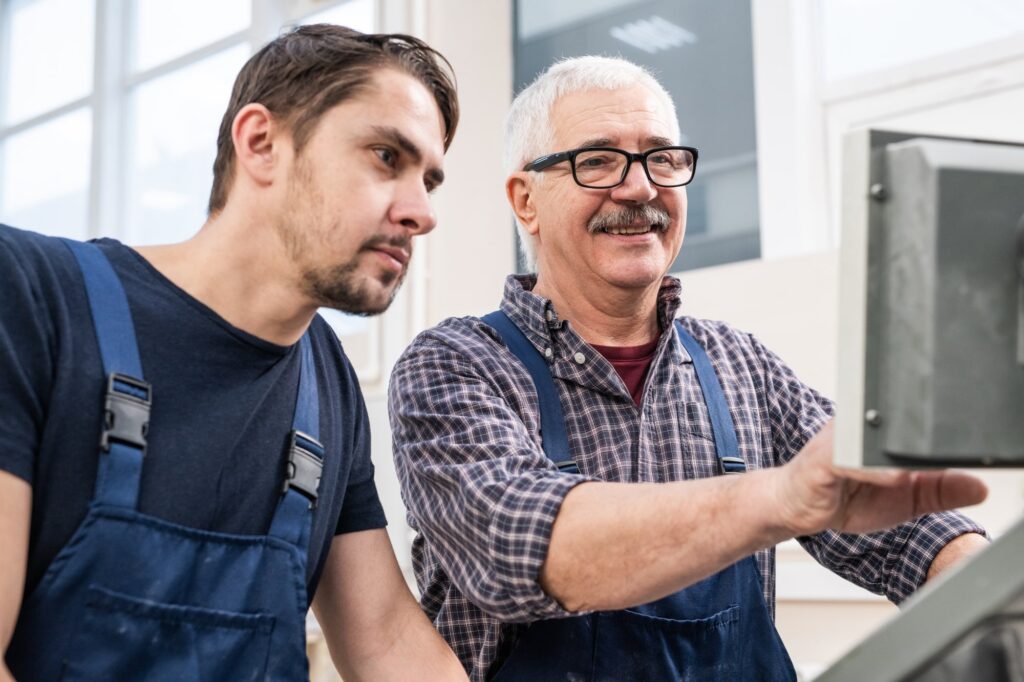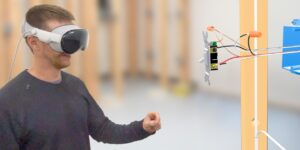We’re in the midst of a major change in the field services industry. While the U.S. Bureau of Labor Statistics estimates an 8% job growth rate over the next five years, the workforce is getting older—leading to significant gaps in skill levels between experienced technicians and the younger generation looking to replace them. Against that backdrop, technology is beginning to play a major role in providing technicians with the training and instructions they need to be effective.
The chasm between the two extremes of the workplace, of course, also means that the way companies approach that training becomes increasingly important. A comprehensive training plan, coupled with a tech platform designed for intuitive and flexible learning, can play a significant role in bridging the skills gap and helping all levels of workers become more proficient in the process.
The Widening Skills Gap Among Field Technicians
The working population is getting older. According to the Pew Research Center, more than 1 million workers retire every year, leading to a significant labor shortage that is especially common in skilled trades. Analysts predict more than 3 million skilled trade positions will remain unfilled by 2028.
Even as these positions get filled, of course, the skills gap between experienced technicians and new hires will continue to be significant. Professionals who are new to the industry simply don’t have the wealth of experience and knowledge needed to seamlessly fill the gaps left by retiring counterparts.
The result is a widening skills gap that, if left unaddressed, can become a significant issue for companies hiring and relying on these field technicians. Especially for larger organizations that rely on the consistency of a large technician workforce to install and maintain machinery and equipment, any chance of success has to include training and instruction designed to bridge a wide range of abilities and skill levels.
Related: 4 Ways BILT Improves Job Training—From Apprentices to Certified Pros
That’s easier said than done. After all, different generations will require different types of training to be most effective. Any plan to train your technicians has to keep in mind not just a skills gap, but a generational gap that meets all of your field techs where they are. It’s the core requirement for any long-term, sustainable training plan.
In today’s work environment, this means offering advanced, technology-driven work instruction that demonstrates commitment to your workforce and helps simultaneously build both their abilities and their confidence
Building a Plan to Bridge the Field Technician Skills Gap
In this complex environment, flexibility is key. And yet, you still need a defined plan that optimizes any training efforts you put in place. A few steps can help you build that plan and maximize your chances of aligning the skill sets of all your field positions.
- Analyze your existing and projected workforce. Every organization’s workforce is unique. Therefore, any plan to build consistent skills has to be built around the unique needs, demographics, and skills shortage in your organization.
- Create real-world, hands-on training opportunities. The age of theoretical, book-based classroom training is over. A modern workforce requires modern means of training, aligned as closely as possible with the real-world scenarios they’ll encounter.
- Gather insights from your workforce to improve your training over time. Analytics have arrived in the training industry. The more insights you can gain about your training as your workforce participates, the more you can align it with their unique and evolving needs.
- Find the right technology to maximize your training opportunities. Finally, you need the right technology to enhance your technicians’ training efforts. In fact, the right platform can enhance your efforts in all of the above steps. Today’s companies are using 3D technology to bridge the skills gap with interactive, multi-sensory training opportunities.
With these steps in place, you can build a plan specifically designed to bridge the increasingly evident skills gap within the field technician workforce. Let’s dig further into what that means, and how you can optimize your plan for maximum success.
Finding Opportunities for More Flexible, Hands-On Training
The training industry has seen a shift to hands-on learning in recent years, and for good reason. The ability to move out of the traditional classroom setting and into hands-on training creates a more active learning environment, in which “learning by doing” becomes a major advantage. Modern, 3D instructions are the means to this end.
More specifically, hands-on learning becomes beneficial to your field technicians for a few core reasons:
- Hands-on, interactive training and instruction provides the time and space to think through each action taken, making the transition to real-world application more natural as a result.
- Hands-on, interactive training also provides a more comprehensive, comfortable learning environment, particularly when training together or when reviewing important information.
- Newer employees who complete hands-on training opportunities become more confident in their abilities, thanks to a feeling that they’ve already performed the tasks when the time comes to apply learned skills.
At the same time, hands-on training can become cumbersome for field technicians when it involves restrictive technologies that are not flexible enough to transition to the real world.
For example, while virtual reality (VR) has become increasingly popular, it can be too restrictive to offer the flexibility the modern workforce demands. Training programs become expensive to create, making it more difficult to build effective programs that address a wide range of skill sets and expertise.
The ability to build hands-on training modules, therefore, can only be effective when a sufficient amount of flexibility is retained for your workforce to easily learn and then apply their knowledge.
Insights-Driven Training Designed to Improve Over Time
No training is perfect from the start. Instead, it should improve over time as you gain the insights needed to know what pieces of it are successful in educating your field techs and which elements need improvement or refinements before preparing your workforce for real-world equipment and machinery.
Those insights come from two core sources:
- Trainees, who can submit feedback around the training and where to make improvements directly to those hosting and building it.
- Data-driven insights about training usage and shortcomings that can be used to make improvements on a more comprehensive basis.
A combination of these two sources can lead to truly comprehensive, qualitative and quantitative insights. When gathered together, they can become invaluable in building a complete training plan and program designed to cover a wide range of skills and environments successfully.
Related: Attracting & Retaining a New Generation of Workers Through Digital-Forward Practices
The right digital environments can enhance these insights and takeaways for your workforce of field technicians. Through advanced, 3D, immersive environments, trainees will be able to effectively comprehend their training and also submit direct feedback in the platform. Meanwhile, the platform can also feed back data insights to provide a broader overview of how—and how successfully—your workforce is engaging with the material.
Applying Learnings from Training to Real-World Job Environments
Another core piece of bridging the field technician skills gap is the transition from training into real-world environments. The above-mentioned hands-on approach is an essential piece to this puzzle, but efforts have to go beyond that general approach, as well.
Consider, for example, the ability to implement 3D interactive training modules into your larger program. Through enhanced interactivity and modern mobility, trainees at all skill levels are able to take the materials with them to the work site, working through them in real-time as they apply learnings to the machinery and equipment on which they work.
Indeed, training materials must be flexible enough to move to the job site with the technicians. This adds a new layer of hands-on learning to the process, enabling field techs who are active on the job to use the materials as a reference for individual tasks or larger processes. That, in turn, minimizes errors that could otherwise be detrimental to both the operation and the field technician’s success.
Evolve Your Field Technician Training With the Right Technology
In the end, bridging the skills gap—especially when considering the necessary skills build-up for new hires in younger generations—has to rely on technology that can accommodate all of the above components of your training plan. That means finding a platform specifically designed to make training your field technicians easy, straightforward, successful, and ongoing.
The right platform will provide interactive training modules that make hands-on learning both possible and natural. It should also offer cross-training opportunities to expand the skills of new hires without making it more difficult for existing technicians to learn new tricks and components.
It should be able to collect data-driven insights on where changes can be made in training or instructional materials, and those changes should be immediate. And finally, it needs to be flexible and nimble enough for technicians to continue learning on the job site, regardless of their current skill level.
That’s where BILT comes in. Designed for professionals, BILT offers digital, 3D work instructions that your field technicians can use for both initial training and job site review or troubleshooting. Contact us to learn more about BILT, and how we can help your company bridge the field tech skills gap.



